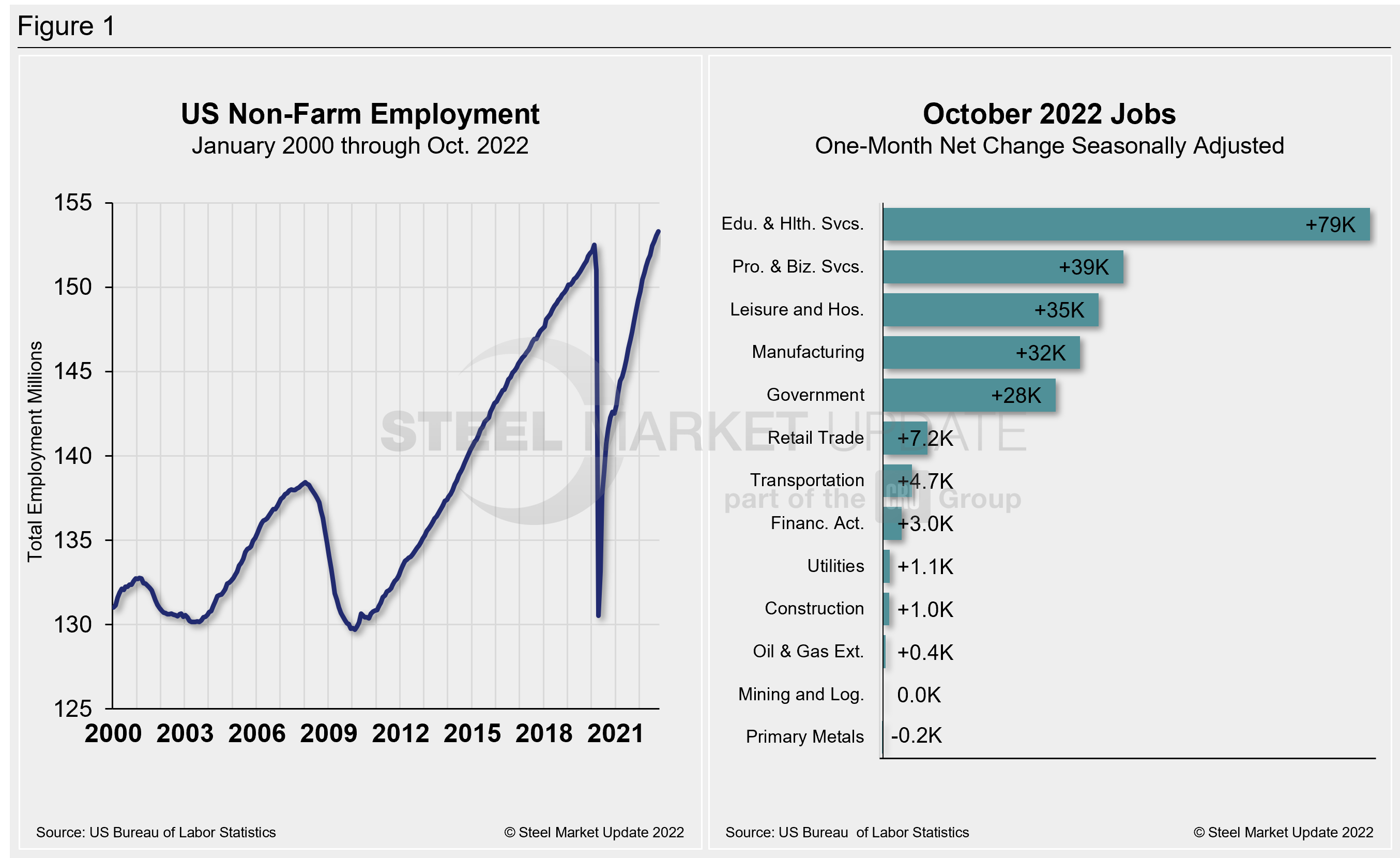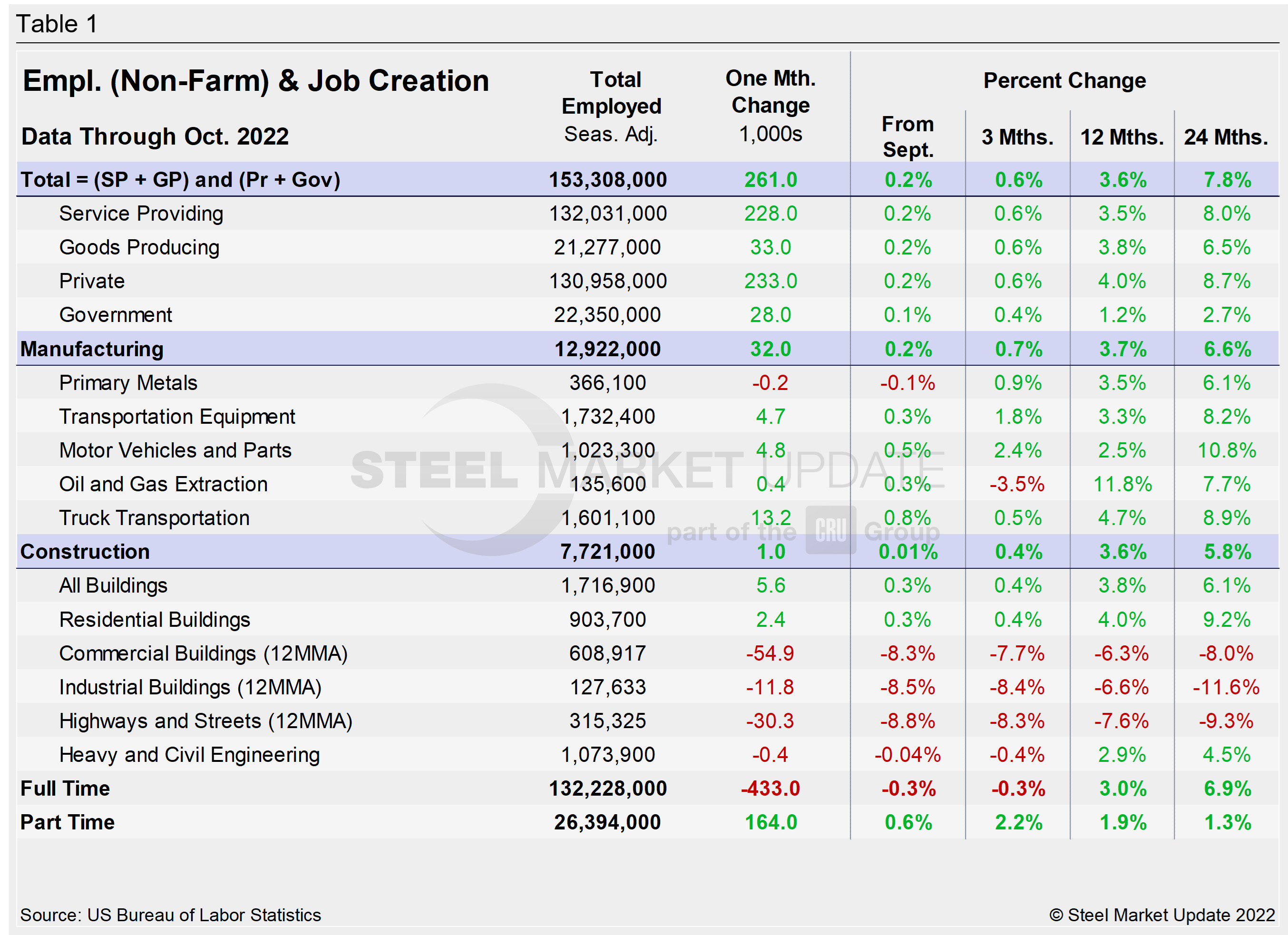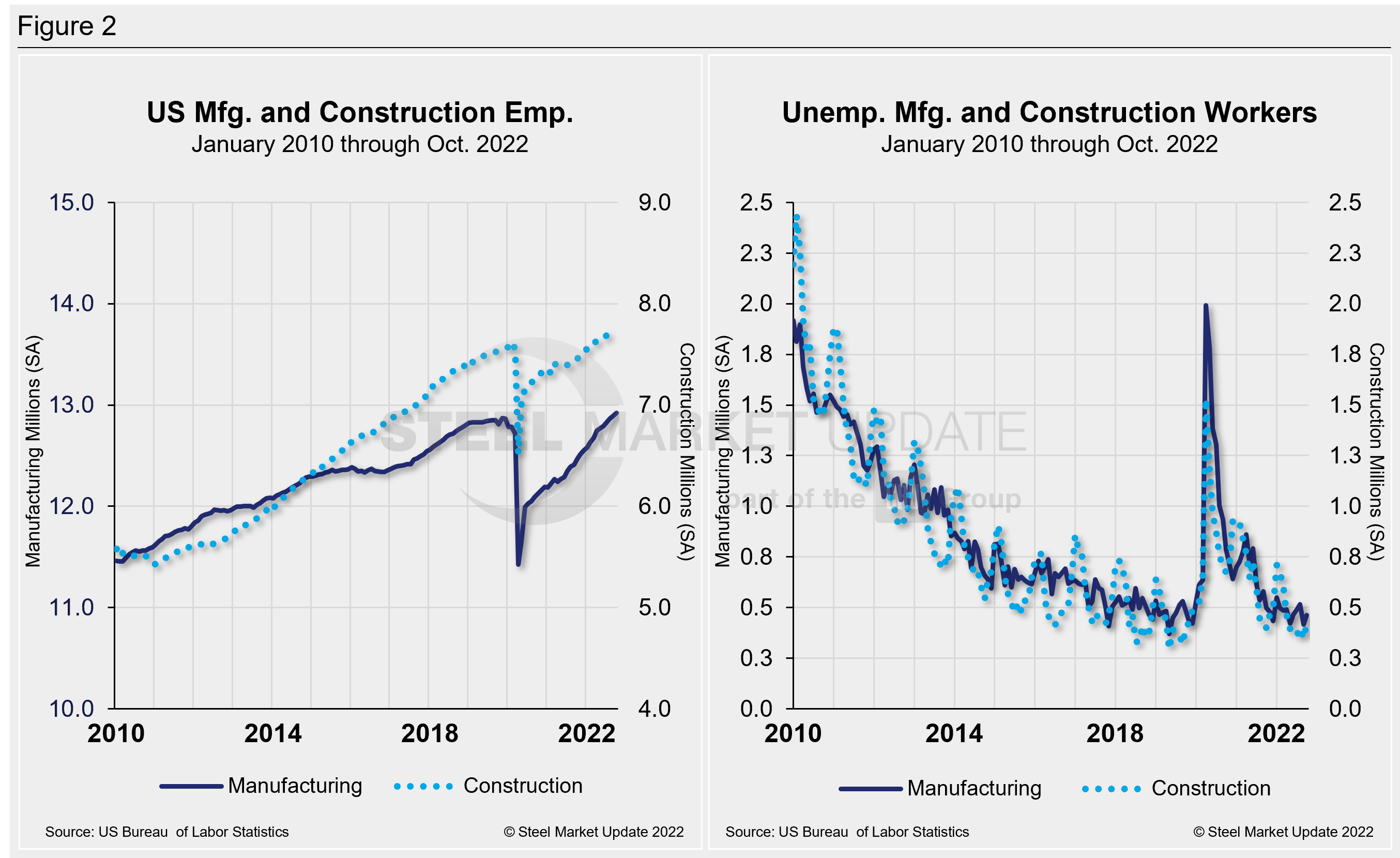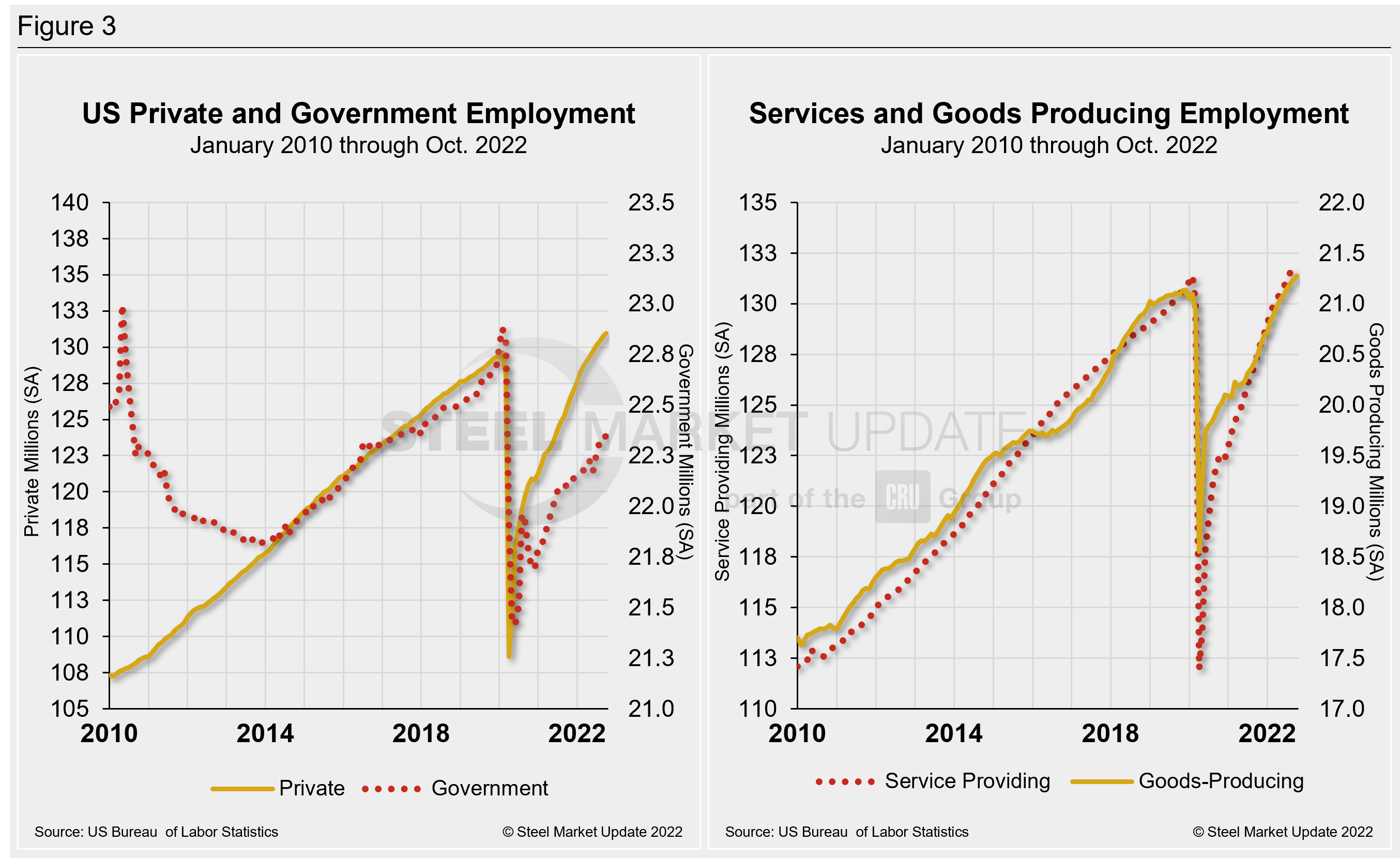Market Data

November 9, 2022
Employment by Industry: Manufacturing Sees Solid Gains in October
Written by David Schollaert
The US labor market added 261,000 jobs in October, down from an upwardly revised total of 315,000 payroll gains the month prior. Last month’s total, though better than expected, still marked the slowest pace of job gains since December 2020, according to data from the Bureau of Labor Statistics (BLS).
The decline in payroll gains last month also pushed the unemployment rate back up 0.2 percentage points to 3.7%, no longer matching the pre-pandemic low.
The labor market has been a bright spot following the historic loss of 22 million jobs at the onset of the pandemic. The recovery was sharp and swift. US employers added an average of 562,000 jobs per month last year and 406,800 jobs per month this year, though the rate has been well below the average the past three months, according to BLS data.
Job gains last month were extensive with some notable bright spots. Sectors batted by the pandemic, like healthcare and leisure and hospitality, continued to add jobs, while manufacturing and professional services also saw solid gains.
Healthcare led job gains, adding 53,000 positions, while professional and technical services contributed 43,000. Leisure and hospitality payrolls were up by 35,000, though the pace of gains has slowed considerably from the increases posted last year. The sector which includes hotel, restaurant, and bar jobs is averaging gains of 78,000 a month this year, compared with 196,000 in 2021.
Wholesale trade added 15,000 jobs, while transportation and warehousing was up by 8,000. Heading into the holiday shopping season, retail posted only a modest gain of 7,200 jobs.
Wages in October continued to rise, though the pace was slower compared to the month prior. Average hourly earnings rose 4.7% on a year-on-year (YoY) basis last month, down slightly from the 5% pace in September. Hourly earnings rose 0.4% monthly, marginally higher than the 0.3% gain the month prior.
The labor force participation rate declined for the second straight month, down by 0.1 percentage point to 62.2%. The rate is noticeably below the pre-pandemic level of 63.4%.
Shown below in Figure 1 is the total number of people employed in the non-farm economy as well as the month-on-month net change in total jobs in October.

Designed on rolling time periods of one month, three months, one year, and two years, the table below breaks total employment into service industries and goods-producing industries, and then into private and government employees. Most of the goods-producing employees work in manufacturing and construction. Comparing service and goods-producing industries in October shows both increased marginally. The steady and repeated gains have pushed both above pre-pandemic levels, where they’ve been for the past seven months. Note that the subcomponents of both manufacturing and construction shown in this table do not add up to the total because we have only included those with the most relevance to the steel industry.

Comparing October to September, manufacturing employment was just 0.2% higher, matching the growth seen in the past two months. Construction was largely sideways MoM, a slowdown from the 0.2% gain in September. The construction sector is still being driven by the residential market despite strong headwinds. Though homebuilding has slowed, overall commercial and industrial buildings have taken a more notable hit. Heavy and civil engineering, a sector that suffered little during the pandemic and was a bright spot, is now down as well.
The three-month and 12-month comparisons show a decent recovery. Primary metals saw job losses last month, but the remaining subsectors experienced decent MoM gains.
Manufacturing employment continued to trend up in September, adding 32,000 jobs, a solid gain over the 22,000 jobs added in September. Construction’s 1,000 payroll gain last month was a poor showing in October after seeing a boost of 12,000 the month prior. Regardless, the latest gains are a far cry from the 54,000 added in February and 35,000 added in May.
Construction and manufacturing unemployment both increased in October after reporting decreases the month prior. Construction unemployment rose 21.1% MoM from 346,000 in September to 419,000 last month. Manufacturing unemployment was up 11.3% MoM following a 19.2% decline the month prior. Manufacturing unemployment rose from 416,000 in September to 463,000 in October. Both sectors are still being heavily impacted by supply-chain disruptions, labor force constraints, and inflation.
The history of employment and unemployment in manufacturing and construction since January 2010 is shown below side-by-side in Figure 2, seasonally adjusted.

Figure 3 details employment comparisons between private and government jobs, as well as services and goods-producing jobs.

Explanation: On the first or second Friday of each month, the Bureau of Labor Statistics releases the employment data for the previous month. Data is available at www.bls.gov. The BLS employment database is a reality check for other economic data streams such as manufacturing and construction. It is easy to drill down into the BLS database to obtain employment data for many subsectors of the economy. The important point about all these data streams is not necessarily the nominal numbers, but the direction in which they are headed.
By David Schollaert, David@SteelMarketUpdate.com







